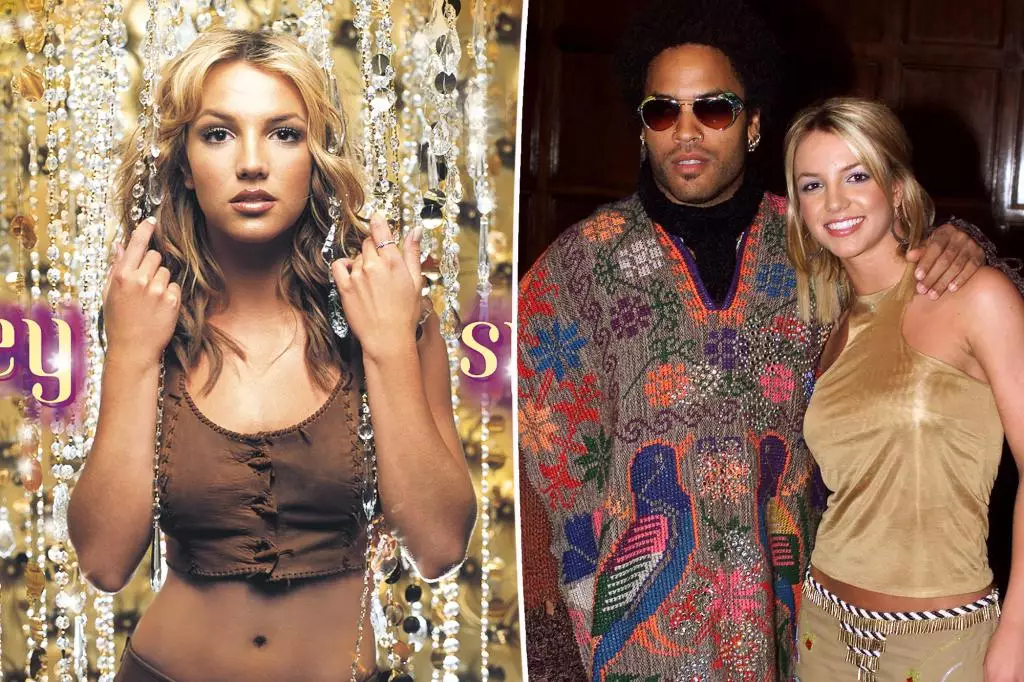For decades, the rumor mill surrounding pop culture has turned endlessly, often birthing incredible tales about iconic figures. One such narrative is the supposed story that Britney Spears shot the legendary cover for her album *Oops!… I Did It Again* at none other than rock star Lenny Kravitz’s house. This intriguing myth has been propelled by enthusiastic fans, numerous Reddit threads, and social media posts that collectively generated a buzz bordering on obsession. However, with the 25th anniversary of the album’s release, it’s time to put this alluring but inaccurate tale to rest.
The announcement from Ruth Levy, the executive producer for the album’s photographer Mark Seliger, definitively dismisses the idea that any part of the shoot took place at Kravitz’s residence. Despite the close friendship between Kravitz and Seliger, the truth remains that the album cover was actually captured in a more conventional setting—Quixote Studios in West Hollywood, California. This revelation challenges the allure of celebrity homes offering backdrops for iconic artworks and speaks volumes about the often embellishing nature of fandom.
Beneath Hollywood Glam: The Creative Process
Photographers are artists in their own right, possessing a unique perspective that transforms ordinary spaces into remarkable visual narratives. In Britney’s case, the album cover was a product of meticulous craftsmanship spearheaded by production designer Walter Barnett. Taking inspiration from the vivid aesthetics of the 1960s, Barnett’s role extended beyond standard set design. His attention to detail, from creating a striking semicylindrical backdrop to painstakingly embellishing it with chandelier crystals, highlights the interactive nature of artistry in pop music.
In many respects, this creative process reflects broader trends in the entertainment industry, where visual and musical elements converge to create cultural phenomena. The golden, button-tufted leather backdrop isn’t just a prop; it embodies an entire era’s fashion consciousness, drawing viewers deeper into the world of early 2000s pop. In retrospect, it serves to remind us that an album cover is rarely just about the artist; it becomes a collaborative effort that encapsulates an era’s spirit.
From Behind the Scenes to Unforgettable Moments
Notably, the *Oops!* album cover represents more than just a successful marketing tool; it marked a defining moment in Britney Spears’ journey as an artist. The innocent, baby-faced image resonated with a generation, captivating audiences across the globe. At 18, Spears became a household name, yet her journey was not devoid of charm and intrigue. An anecdote worth mentioning is from Zoë Kravitz, Lenny’s daughter, who fondly recalled her father surprising her with a visit to the set where she got to meet her idol, Britney.
This touching interlude signifies the humanizing aspect of celebrity culture—how pop stars intersect with the lives of the ordinary and the extraordinary alike. In a world that often seems to idealize fame, it’s refreshing to consider that these public figures can and do play significant roles in the personal experiences of others, transcending the boundaries of stardom.
A Cultural Milestone: The Legacy of *Oops!*
The success of the *Oops!* album is sharply defined by record-breaking statistics. Upon its release, it made history as the first album by a female artist to sell over a million copies in its opening week—an incredible feat that stood for 15 years until it was eclipsed by Adele’s *25*. Such achievements reflect not just individual artistry, but also a collective appreciation for the culture surrounding pop music. With hit singles like “Stronger” and “Lucky,” the album displayed a spectrum of emotional depth and musical versatility.
In branding itself through catchy hooks and a relatable image, *Oops!… I Did It Again* went on to create a microcosm of entertainment that influenced future artists across genres. As Spears celebrates the album’s 25th anniversary with a re-release featuring new remixes and bonus tracks, she reasserts her place within the pantheon of pop music legends. Every new interpretation of her work adds layers to her already rich legacy, further intertwining the narrative of her music with her evolution as an artist.
Britney’s journey has been a blend of formidable highs and challenging lows, making her celebration all the more poignant. As we reflect on the revelations surrounding her album cover and its creative inception, it becomes clear that the magic of pop culture lies not only in extravagant settings but also in the genuine human connections and artistry that breathe life into every frame.

